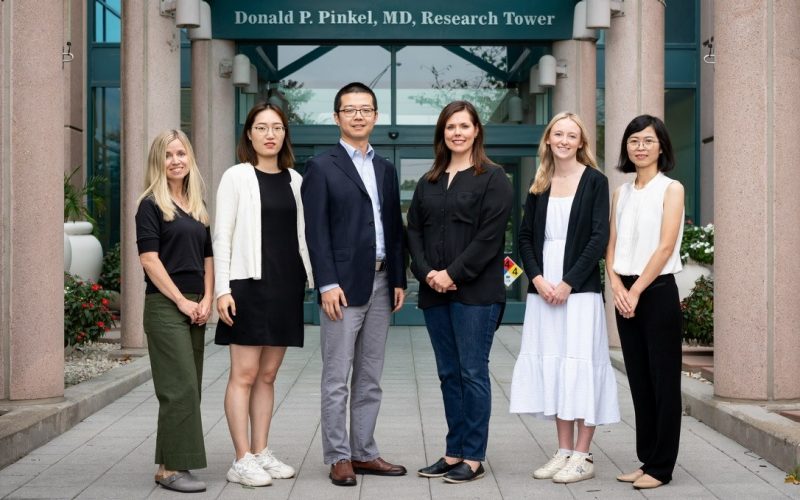
Overcoming a HOXA9 family problem
While it was previously known that HOXA9 is overexpressed in high-risk pediatric leukemias, it has historically been challenging to study and target. The HOX family of proteins contains 39 members, which are all very similar to each other. The similarity also makes it challenging to study because current techniques have trouble distinguishing between the HOX proteins. Functionally, other HOX family members could potentially compensate for HOXA9 function upon targeting.
With that in mind, the researchers created a system that identified the genes bound specifically by HOXA9 in a certain leukemia subtype (mixed-lineage leukemia rearrangement or MLL-r) by inserting a tag onto HOXA9.
“Imagine you are in a dog park and need to find a certain golden retriever, but there are a bunch of them running around, and you don’t know which one is yours because all the dogs look the same,” said Li. “If you put a neon pink harness on your dog beforehand, it’s easy to find among the group. That is how we could track everywhere HOXA9 went.”
The small tag does not affect HOXA9’s regular function and makes HOXA9 easy to trace in cells. The researchers then sequenced the attached DNA to identify the leukemia-related genes bound by HOXA9, allowing scientists to study this relatively small list of genes that may be amenable to therapeutic development.
“We narrowed hundreds of thousands of targets to just over two hundred by comparing to controls,” said Fields. “And when we can investigate the regulation mechanism and network of HOXA9, and what’s happening in the cells, that’s where hopefully we can find ways to help kids with high-risk cancers get better.”
Authors and funding
The study’s other co-first author is Xujie Zhao, formerly of St. Jude. The study’s other authors are Wojciech Rosikiewicz, Judith Hyle, Wenjie Qi, Zhenling Liu, Siqi Yi, Yong Cheng and Beisi Xu, all of St. Jude; and Shelby Mryncza, Rhodes College.
The study was supported by grants from the National Cancer Institute (5P30CA021765), American Cancer Society (RSG-476 23-874240-01-DMC), V-Foundation (V2021-010) and ALSAC, the fundraising and awareness organization of St. Jude.
